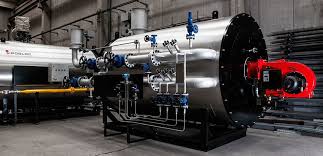
Jul . 27, 2024 03:17 Back to list
Exploring Gas and Steam Heat Systems for Efficient Thermal Energy Solutions in Industrial Applications
The Role of Gas and Steam Heat in Modern Energy Systems
In today's rapidly evolving energy landscape, the choice of heating systems plays a critical role in determining efficiency, sustainability, and environmental impact. Among various heating technologies, gas and steam heat systems have emerged as significant players, particularly in industrial applications and centralized heating processes.
The Role of Gas and Steam Heat in Modern Energy Systems
On the other hand, steam heating systems generate steam through the heating of water, which is then distributed through pipes to provide heat to buildings or industrial processes. These systems are advantageous in scenarios requiring high-temperature applications, such as in chemical processes, food production, and sterilization in healthcare facilities. The ability of steam to transfer large amounts of energy makes it a preferred choice for various industries. Furthermore, steam heating systems can be particularly effective in ensuring consistent and controllable temperature levels, thus enhancing process efficiency.
gas steam heat

The interplay between gas and steam heat systems can lead to significant improvements in energy utilization. For instance, cogeneration—also known as combined heat and power (CHP)—is an innovative approach where both electricity and useful heat are produced from the same energy source, often natural gas. This dual-generation technique capitalizes on the waste heat produced during electricity generation to create steam, which can then be used for heating purposes. This not only enhances the overall efficiency of the energy system but also reduces greenhouse gas emissions compared to conventional systems that produce electricity and heat separately.
As we move towards a more sustainable future, the integration of renewable energy sources into gas and steam heating systems is becoming increasingly viable. Biomass, for example, can be used in gasification processes to produce synthetic natural gas, which can then power gas heating systems. Similarly, district heating networks powered by renewable sources or excess heat from industrial processes can provide steam to various end-users. This transition supports the global objectives of reducing dependence on fossil fuels while enhancing energy security.
However, challenges remain. The infrastructure for gas pipelines and steam distribution systems requires substantial investment and maintenance. Additionally, market volatility and fluctuations in natural gas prices can impact the economic viability of these systems. It is also crucial to consider the technological advancements needed to improve the efficiency and lower the emissions of gas and steam heat systems, ensuring they align with the goals of a sustainable energy future.
In conclusion, gas and steam heat systems play a vital role in modern energy systems, offering efficient and effective heating solutions for various applications. As we continue to explore innovative approaches to energy generation and distribution, the integration of these technologies with renewable sources will be essential in achieving a sustainable and resilient energy future. With ongoing advancements and investments, gas and steam heating systems can not only meet current energy demands but also adapt to the evolving challenges of climate change and energy security.
-
High-Efficiency Commercial Oil Fired Steam Boiler for Industry
NewsJul.30,2025
-
High-Efficiency Biomass Fired Thermal Oil Boiler Solutions
NewsJul.30,2025
-
High Efficiency Gas Fired Thermal Oil Boiler for Industrial Heating
NewsJul.29,2025
-
High-Efficiency Gas Fired Hot Water Boiler for Sale – Reliable & Affordable
NewsJul.29,2025
-
High Efficiency Biomass Fired Hot Water Boiler for Industrial and Commercial Use
NewsJul.29,2025
-
High-Efficiency Biomass Fired Hot Water Boiler for Industrial Use
NewsJul.28,2025
Related PRODUCTS






















